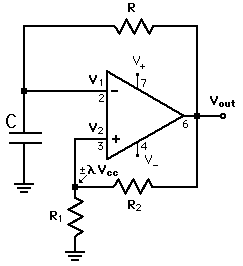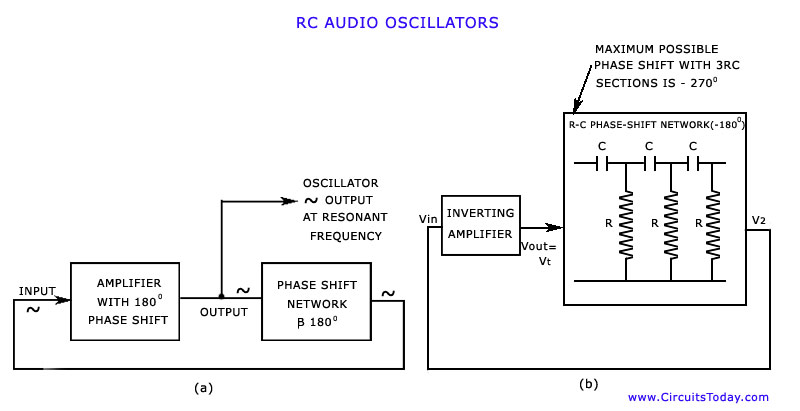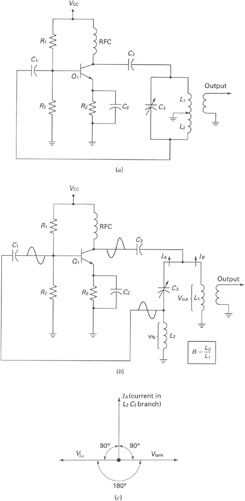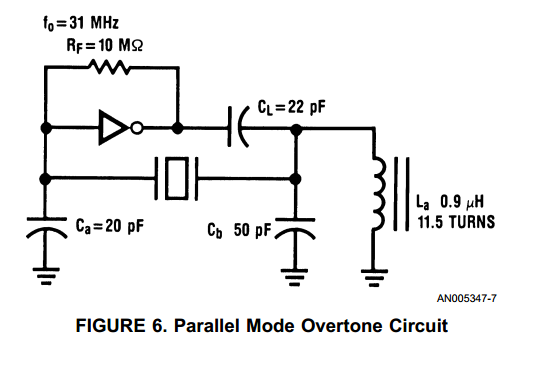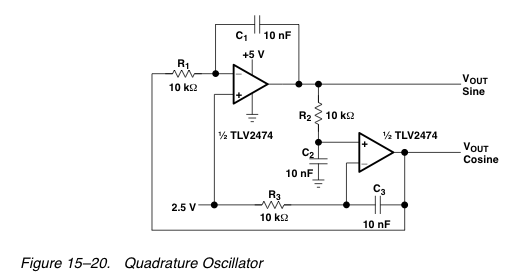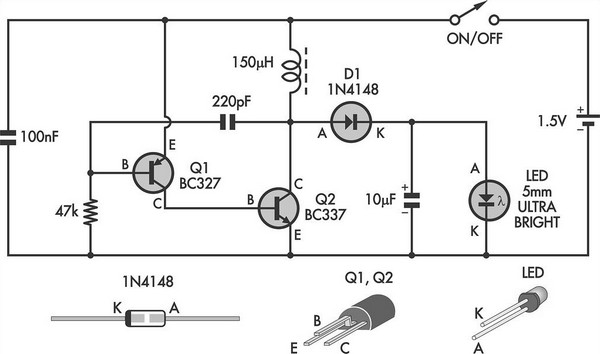
Cosine wave Oscillator
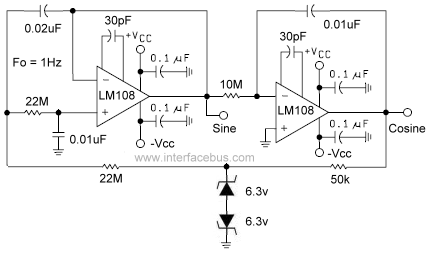
This circuit is designed to output both a sine wave and a cosine wave. The design utilizes an operational amplifier, with the output frequency determined by component values set to 1Hz. The first operational amplifier generates a 1Hz sine wave, while the second operational amplifier produces a 1Hz cosine wave. The circuit outputs two sine waves, one of which is 90 degrees out of phase with the other. Two zener diodes are employed to establish the minimum and maximum voltage levels. The primary function of the first operational amplifier is to produce a sine wave, while the second operational amplifier takes the sine wave as input and outputs a phase-shifted signal. The operational amplifier is a general-purpose device, allowing for substitutions as required; however, many passive components determine the frequency of operation and should not be replaced unless a different output frequency is desired. The operational amplifier used is the LM108, a general-purpose operational amplifier available in several package styles, including an 8-pin or 16-pin Plastic DIP Package, a Ceramic DIP Package (for military and space applications), an 8-Lead TO-5 Case, or a surface mount SOIC Package. An upgrade version, the LM108A, may also be available, and various other operational amplifiers can be substituted in the schematic. The zener diode used is a reference diode labeled as 6.3 volts (Vz), specifically a 6.2V 1N4460, with a minimum voltage of 5.89V and a maximum of 6.51V. The case style for this diode is a DO41 Package (Through-Hole).
This circuit consists of two operational amplifiers configured to generate sine and cosine waveforms. The first operational amplifier (op-amp) operates in a sine wave configuration, utilizing feedback components that establish the desired frequency of 1Hz. The output of this op-amp is a pure sine wave signal. The second op-amp is configured to generate a cosine wave, which is essentially a sine wave phase-shifted by 90 degrees. This is achieved by applying the sine wave output from the first op-amp as the input to the second op-amp, which processes the signal to produce the cosine output.
The zener diodes included in the circuit serve as voltage reference components that help maintain stable output levels by setting the minimum and maximum voltage thresholds for the op-amps. This is crucial for ensuring that the output signals remain within desired limits and do not exceed operational parameters, which could lead to signal distortion or damage to the components.
The LM108 operational amplifier is a versatile component widely used in various applications. Its compatibility with numerous package styles allows for flexibility in circuit design and integration. When substituting operational amplifiers, it is essential to consider the specifications and performance characteristics of the replacement components to ensure they meet the requirements of the circuit.
In summary, this circuit effectively demonstrates the generation of sine and cosine waveforms using operational amplifiers, showcasing the functionality of phase shifting and voltage regulation through the use of zener diodes. The careful selection of components and their configurations is critical for achieving the desired output characteristics.This circuit is designed to output both a sine wave and cosine wave. This particular design uses an operational amplifier. As shown in the schematic the output frequency is set by the component values as 1Hz. The first operational amplifier outputs a 1Hz sine wave while the second operation amplifier outputs a 1Hz cosine wave. The circuit outputs two sine wave, one 90 degrees out of phase with the other. The two zener diodes are used to set the minimum and maximum voltages. Refer to the link for another Op Amp Sinewave Generator, with a single output. Of course the primary function of the first op amp is to produce a sine wave, while the second op amp produces the same signal but 90 degrees phase shifted. That is the second op amp uses the sine wave as an input and outputs that signal out of phase [phase shifter].
The operational amplifier is a general purpose device, and may be substituted as required. However many of the passive parts set the frequency of operation and should not be substituted, unless a new output frequency is required. Op Amp: A LM108, general purpose operational amplifier. The most common package style was an 8-pin or 16-pin Plastic DIP Package, or Ceramic DIP Package [military and space applications], an 8-Lead TO-5 Case or a surface mount SOIC Package.
List of Companies making Operational Amplifier ICs. There is an upgrade which may still be stocked as LM108A, although many different op-amps might be substituted for the one in the schematic. Zener Diode: Reference diode, labeled as 6. 3 volts [Vz]. A 6. 2v 1N4460 is referenced on this site [5. 89v minimum to 6. 51v maximum]. Case style is a DO41 Package [Through-Hole]. 🔗 External reference
This circuit consists of two operational amplifiers configured to generate sine and cosine waveforms. The first operational amplifier (op-amp) operates in a sine wave configuration, utilizing feedback components that establish the desired frequency of 1Hz. The output of this op-amp is a pure sine wave signal. The second op-amp is configured to generate a cosine wave, which is essentially a sine wave phase-shifted by 90 degrees. This is achieved by applying the sine wave output from the first op-amp as the input to the second op-amp, which processes the signal to produce the cosine output.
The zener diodes included in the circuit serve as voltage reference components that help maintain stable output levels by setting the minimum and maximum voltage thresholds for the op-amps. This is crucial for ensuring that the output signals remain within desired limits and do not exceed operational parameters, which could lead to signal distortion or damage to the components.
The LM108 operational amplifier is a versatile component widely used in various applications. Its compatibility with numerous package styles allows for flexibility in circuit design and integration. When substituting operational amplifiers, it is essential to consider the specifications and performance characteristics of the replacement components to ensure they meet the requirements of the circuit.
In summary, this circuit effectively demonstrates the generation of sine and cosine waveforms using operational amplifiers, showcasing the functionality of phase shifting and voltage regulation through the use of zener diodes. The careful selection of components and their configurations is critical for achieving the desired output characteristics.This circuit is designed to output both a sine wave and cosine wave. This particular design uses an operational amplifier. As shown in the schematic the output frequency is set by the component values as 1Hz. The first operational amplifier outputs a 1Hz sine wave while the second operation amplifier outputs a 1Hz cosine wave. The circuit outputs two sine wave, one 90 degrees out of phase with the other. The two zener diodes are used to set the minimum and maximum voltages. Refer to the link for another Op Amp Sinewave Generator, with a single output. Of course the primary function of the first op amp is to produce a sine wave, while the second op amp produces the same signal but 90 degrees phase shifted. That is the second op amp uses the sine wave as an input and outputs that signal out of phase [phase shifter].
The operational amplifier is a general purpose device, and may be substituted as required. However many of the passive parts set the frequency of operation and should not be substituted, unless a new output frequency is required. Op Amp: A LM108, general purpose operational amplifier. The most common package style was an 8-pin or 16-pin Plastic DIP Package, or Ceramic DIP Package [military and space applications], an 8-Lead TO-5 Case or a surface mount SOIC Package.
List of Companies making Operational Amplifier ICs. There is an upgrade which may still be stocked as LM108A, although many different op-amps might be substituted for the one in the schematic. Zener Diode: Reference diode, labeled as 6. 3 volts [Vz]. A 6. 2v 1N4460 is referenced on this site [5. 89v minimum to 6. 51v maximum]. Case style is a DO41 Package [Through-Hole]. 🔗 External reference
